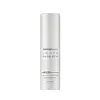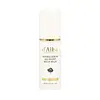What's inside
What's inside
 Key Ingredients
Key Ingredients

 Benefits
Benefits

 Concerns
Concerns

 Ingredients Side-by-side
Ingredients Side-by-side

Water
Skin ConditioningDibutyl Adipate
EmollientSynthetic Wax
AbrasiveCaprylic/Capric Triglyceride
MaskingHelianthus Annuus Seed Oil
EmollientPolyglyceryl-2 Triisostearate
EmulsifyingButylene Glycol
HumectantVinyldimethicone
Octyldodecanol
EmollientTocopheryl Acetate
AntioxidantOzokerite
Emulsion StabilisingGlycerin
HumectantPolyethylene
AbrasiveVinyl Dimethicone/Methicone Silsesquioxane Crosspolymer
Polyglyceryl-4 Diisostearate/Polyhydroxystearate/Sebacate
EmulsifyingOryza Sativa Extract
AbsorbentStellaria Media Extract
Skin ConditioningCentella Asiatica Extract
CleansingCeramide NP
Skin ConditioningCeramide As
Skin ConditioningCeramide AP
Skin ConditioningCeramide Ns
Skin ConditioningCeramide EOP
Skin ConditioningCholesterol
EmollientLactobacillus Ferment
Skin ConditioningHydrogenated Lecithin
EmulsifyingOryza Sativa Bran Oil
EmollientSodium Chloride
MaskingMicrocrystalline Wax
Emulsion StabilisingBisabolol
MaskingLauryl Polyglyceryl-3 Polydimethylsiloxyethyl Dimethicone
Skin ConditioningPolyglyceryl-5 Polyricinoleate
EmulsifyingGlyceryl Caprylate
EmollientCaprylyl Glycol
Emollient1,2-Hexanediol
Skin ConditioningEthylhexylglycerin
Skin ConditioningStearalkonium Hectorite
Gel FormingPropylene Carbonate
SolventDipropylene Glycol
HumectantTocopherol
AntioxidantGlyceryl Stearate
EmollientWater, Dibutyl Adipate, Synthetic Wax, Caprylic/Capric Triglyceride, Helianthus Annuus Seed Oil, Polyglyceryl-2 Triisostearate, Butylene Glycol, Vinyldimethicone, Octyldodecanol, Tocopheryl Acetate, Ozokerite, Glycerin, Polyethylene, Vinyl Dimethicone/Methicone Silsesquioxane Crosspolymer, Polyglyceryl-4 Diisostearate/Polyhydroxystearate/Sebacate, Oryza Sativa Extract, Stellaria Media Extract, Centella Asiatica Extract, Ceramide NP, Ceramide As, Ceramide AP, Ceramide Ns, Ceramide EOP, Cholesterol, Lactobacillus Ferment, Hydrogenated Lecithin, Oryza Sativa Bran Oil, Sodium Chloride, Microcrystalline Wax, Bisabolol, Lauryl Polyglyceryl-3 Polydimethylsiloxyethyl Dimethicone, Polyglyceryl-5 Polyricinoleate, Glyceryl Caprylate, Caprylyl Glycol, 1,2-Hexanediol, Ethylhexylglycerin, Stearalkonium Hectorite, Propylene Carbonate, Dipropylene Glycol, Tocopherol, Glyceryl Stearate
Helianthus Annuus Seed Oil
EmollientSynthetic Wax
AbrasiveButyrospermum Parkii Butter
Skin ConditioningOctyldodecanol
EmollientPolyethylene
AbrasivePolyglyceryl-2 Isostearate/Dimer Dilinoleate Copolymer
EmollientCaprylic/Capric Triglyceride
MaskingTocopheryl Acetate
AntioxidantMacadamia Integrifolia Seed Oil
Skin ConditioningSimmondsia Chinensis Seed Oil
EmollientPrunus Amygdalus Dulcis Oil
Skin ConditioningMonascus Extract
Skin ConditioningDaucus Carota Sativa Root Extract
Skin ConditioningPerilla Ocymoides Leaf Extract
TonicCentella Asiatica Extract
CleansingBorago Officinalis Extract
EmollientBeta Vulgaris Root Extract
Skin ConditioningAngelica Gigas Extract
Skin ConditioningAnthemis Nobilis Flower Extract
MaskingCalendula Officinalis Flower Extract
MaskingCardiospermum Halicacabum Flower/Leaf/Vine Extract
Skin ConditioningTuber Magnatum Extract
Skin ConditioningNelumbo Nucifera Flower Extract
Skin ConditioningRose Extract
Skin ConditioningJasminum Officinale Extract
MaskingAnemarrhena Asphodeloides Root Extract
Skin ConditioningNarcissus Pseudo-Narcissus Flower Extract
Skin ConditioningLilium Candidum Bulb Extract
Skin ConditioningIris Versicolor Extract
EmollientFreesia Refracta Extract
Skin ConditioningCollagen Extract
Skin ConditioningCamellia Japonica Seed Oil
EmollientOlea Europaea Fruit Oil
MaskingCamellia Sinensis Seed Oil
HumectantArgania Spinosa Kernel Oil
EmollientHippophae Rhamnoides Fruit Oil
Skin ProtectingEchium Plantagineum Seed Oil
Skin ConditioningGlycine Soja Oil
EmollientPersea Gratissima Oil
Skin ConditioningOenothera Biennis Oil
EmollientMacadamia Ternifolia Seed Oil
EmollientMicrocrystalline Wax
Emulsion StabilisingBisabolol
MaskingSorbitan Sesquioleate
EmulsifyingTocopherol
AntioxidantWater
Skin ConditioningHelianthus Annuus Seed Oil Unsaponifiables
EmollientCeramide NP
Skin ConditioningHydrolyzed Hyaluronic Acid
HumectantHydrogenated Polyisobutene
EmollientButylene Glycol
HumectantGlutathione
Ascorbic Acid
Antioxidant1,2-Hexanediol
Skin ConditioningGlucose
HumectantMannose
HumectantParfum
MaskingDehydroacetic Acid
PreservativeCitral
PerfumingLinalool
PerfumingCitronellol
PerfumingHexyl Cinnamal
PerfumingLimonene
PerfumingHelianthus Annuus Seed Oil, Synthetic Wax, Butyrospermum Parkii Butter, Octyldodecanol, Polyethylene, Polyglyceryl-2 Isostearate/Dimer Dilinoleate Copolymer, Caprylic/Capric Triglyceride, Tocopheryl Acetate, Macadamia Integrifolia Seed Oil, Simmondsia Chinensis Seed Oil, Prunus Amygdalus Dulcis Oil, Monascus Extract, Daucus Carota Sativa Root Extract, Perilla Ocymoides Leaf Extract, Centella Asiatica Extract, Borago Officinalis Extract, Beta Vulgaris Root Extract, Angelica Gigas Extract, Anthemis Nobilis Flower Extract, Calendula Officinalis Flower Extract, Cardiospermum Halicacabum Flower/Leaf/Vine Extract, Tuber Magnatum Extract, Nelumbo Nucifera Flower Extract, Rose Extract, Jasminum Officinale Extract, Anemarrhena Asphodeloides Root Extract, Narcissus Pseudo-Narcissus Flower Extract, Lilium Candidum Bulb Extract, Iris Versicolor Extract, Freesia Refracta Extract, Collagen Extract, Camellia Japonica Seed Oil, Olea Europaea Fruit Oil, Camellia Sinensis Seed Oil, Argania Spinosa Kernel Oil, Hippophae Rhamnoides Fruit Oil, Echium Plantagineum Seed Oil, Glycine Soja Oil, Persea Gratissima Oil, Oenothera Biennis Oil, Macadamia Ternifolia Seed Oil, Microcrystalline Wax, Bisabolol, Sorbitan Sesquioleate, Tocopherol, Water, Helianthus Annuus Seed Oil Unsaponifiables, Ceramide NP, Hydrolyzed Hyaluronic Acid, Hydrogenated Polyisobutene, Butylene Glycol, Glutathione, Ascorbic Acid, 1,2-Hexanediol, Glucose, Mannose, Parfum, Dehydroacetic Acid, Citral, Linalool, Citronellol, Hexyl Cinnamal, Limonene
Alternatives
Ingredients Explained
These ingredients are found in both products.
Ingredients higher up in an ingredient list are typically present in a larger amount.
1,2-Hexanediol is a synthetic liquid and another multi-functional powerhouse.
It is a:
- Humectant, drawing moisture into the skin
- Emollient, helping to soften skin
- Solvent, dispersing and stabilizing formulas
- Preservative booster, enhancing the antimicrobial activity of other preservatives
Bisabolol is famous for its skin soothing properties. It does this by blocking inflammatory signals, helping to reduce your body's reaction to irritation.
This ingredient also interferes with the process of hyperpigmentation. This can help with reducing dark spots and uneven tone.
Bisabolol is an antioxidant. Antioxidants help fight free-radicals. Free-radicals are molecules that may damage your skin cells. By fighting these free-radicals, Bisabolol may slow down signs of aging.
Studies have shown Bisabolol to have antimicrobial properties and may be a fungicide. These properties help preserve a product's shelf life.
All these properties makes bisabolol a great skin barrier helper ingredient.
Bisabolol also helps the absorption of other ingredients.
Note: Synthetic Bisabolol has been shown to be less effective.
Learn more about BisabololButylene Glycol (or BG) is used within cosmetic products for a few different reasons:
Overall, Butylene Glycol is a safe and well-rounded ingredient that works well with other ingredients.
Though this ingredient works well with most skin types, some people with sensitive skin may experience a reaction such as allergic rashes, closed comedones, or itchiness.
Learn more about Butylene GlycolThis ingredient is an emollient, solvent, and texture enhancer. It is considered a skin-softener by helping the skin prevent moisture loss.
It helps thicken a product's formula and makes it easier to spread by dissolving clumping compounds.
Caprylic Triglyceride is made by combining glycerin with coconut oil, forming a clear liquid.
While there is an assumption Caprylic Triglyceride can clog pores due to it being derived from coconut oil, there is no research supporting this.
Learn more about Caprylic/Capric TriglycerideCentella Asiatica Extract (Centella) is derived from an herb native to Southeast Asia. It is famous for its anti-inflammatory and soothing properties.
Centella is rich in antioxidants and amino acids, such as Madecassic Acid and Asiaticoside.
Studies show the compounds in centella help with:
The combination of all these properties makes centella effective at soothing, hydrating, and protecting the skin.
Other great components of centella include Vitamin A, vitamin C, several B vitamins, and Asiatic Acid.
Fun fact: Centella has been used as a medicine and in food for many centuries. As a medicine, it is used to treat burns, scratches, and wounds.
Learn more about Centella Asiatica ExtractCeramide NP is a type of ceramide and formally known as ceramide 3.
Ceramides are intercellular lipids naturally found in our skin that bonds dead skin cells together to create a barrier. They are known for their ability to hold water and thus are a great ingredient for dry skin.
Ceramides are an important building block for our skin barrier. A stronger barrier helps the skin look more firm and hydrated. By bolstering the skin ceramides act as a barrier against irritating ingredients. This can help with inflammation as well.
If you would like to eat ceramides, sweet potatoes contain a small amount.
Read more about other common types of ceramides here:
Ceramide AP
Ceramide EOP
Helianthus Annuus Seed Oil is the oil derived from the seeds of a Sunflower. Sunflower seed oil is non-fragrant. It is an emollient, meaning it helps to soften the skin.
Sunflower seed oil contains many fatty acids. The fatty acids found in sunflower seeds include (from highest amount to least): linoleic acid, myristic acid, palmitic acid, stearic acid, arachidic acid, oleic acid, and linolenic acid.
These fatty acids help the skin create ceramides. Ceramides play a role in repairing the skin barrier.
Helianthus Annuus Seed Oil helps moisturize the skin. This in turn helps the skin look more rejuvenated and smoother.
Sunflowers are rich in vitamin E.
Historians believe Indigenous cultures of North America domesticated sunflowers before corn. Thus they relied on sunflower oil for a variety of uses. One such use is moisturizing skin and hair.
Sunflower seed oil may not be fungal acne safe. We recommend speaking with a professional if you have any concerns.
Learn more about Helianthus Annuus Seed OilMicrocrystalline Wax is created by de-oiling petroleum. It is highly refined and purified before being added to cosmetics.
Microcrystalline Wax is used to enhance the texture and create even consistency. It helps stabilize a product by preventing ingredients from separating.
Octyldodecanol is a fatty alcohol. It is primarily used to enhance the texture of products.
As an emulsifier, Octyldodecanol helps prevent the oils and waters from separating. It also prevents ingredients from creating foam when shaken.
Octyldodecanol is created by reducing fatty acid to an alcohol.
Due to its high molecular weight, it does not get absorbed into the skin.
Learn more about OctyldodecanolPolyethylene is a synthetic ingredient that helps the skin retain moisture. It is a polymer.
It is also typically used within product formulations to help bind solid ingredients together and thicken oil-based ingredients. When added to balms and emulsions, it helps increase the melting point temperature.
Synthetic Wax is created from fossil fuels such as natural gas. It is used to enhance texture, adjust pH, and as an occlusive.
It may also be used as an abrasive ingredient to exfoliate the skin.
Synthetic Wax may not be fungal acne safe.
Learn more about Synthetic WaxTocopherol (also known as Vitamin E) is a common antioxidant used to help protect the skin from free-radicals and strengthen the skin barrier. It's also fat soluble - this means our skin is great at absorbing it.
Vitamin E also helps keep your natural skin lipids healthy. Your lipid skin barrier naturally consists of lipids, ceramides, and fatty acids. Vitamin E offers extra protection for your skin’s lipid barrier, keeping your skin healthy and nourished.
Another benefit is a bit of UV protection. Vitamin E helps reduce the damage caused by UVB rays. (It should not replace your sunscreen). Combining it with Vitamin C can decrease sunburned cells and hyperpigmentation after UV exposure.
You might have noticed Vitamin E + C often paired together. This is because it is great at stabilizing Vitamin C. Using the two together helps increase the effectiveness of both ingredients.
There are often claims that Vitamin E can reduce/prevent scarring, but these claims haven't been confirmed by scientific research.
Learn more about TocopherolTocopheryl Acetate is AKA Vitamin E. It is an antioxidant and protects your skin from free radicals. Free radicals damage the skin by breaking down collagen.
One study found using Tocopheryl Acetate with Vitamin C decreased the number of sunburned cells.
Tocopheryl Acetate is commonly found in both skincare and dietary supplements.
Learn more about Tocopheryl AcetateWater. It's the most common cosmetic ingredient of all. You'll usually see it at the top of ingredient lists, meaning that it makes up the largest part of the product.
So why is it so popular? Water most often acts as a solvent - this means that it helps dissolve other ingredients into the formulation.
You'll also recognize water as that liquid we all need to stay alive. If you see this, drink a glass of water. Stay hydrated!
Learn more about Water